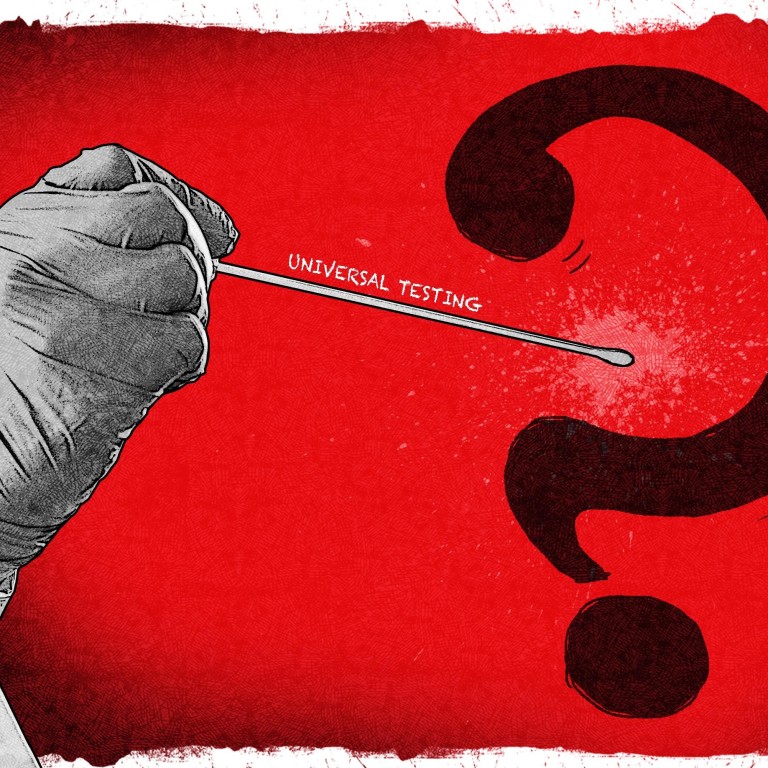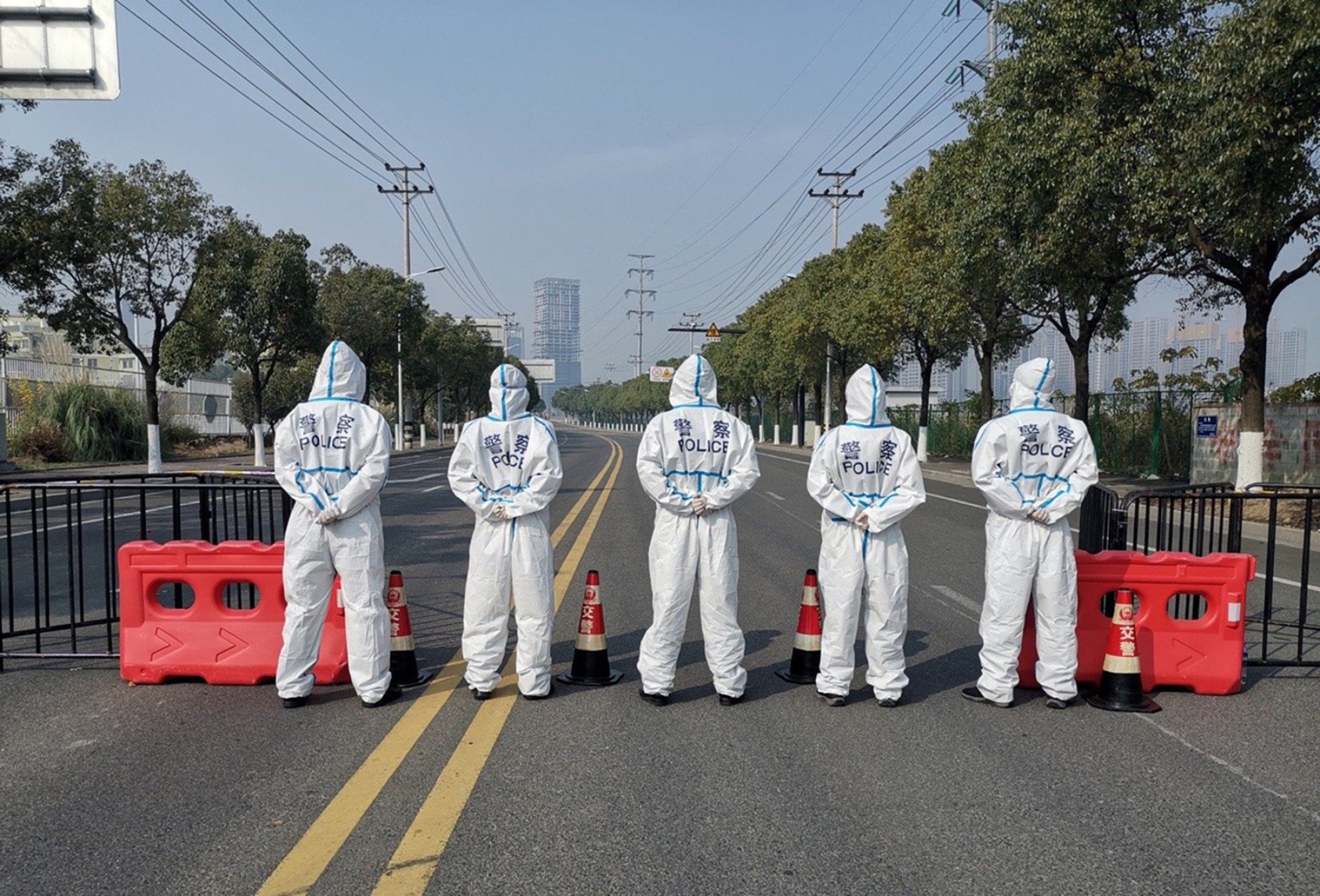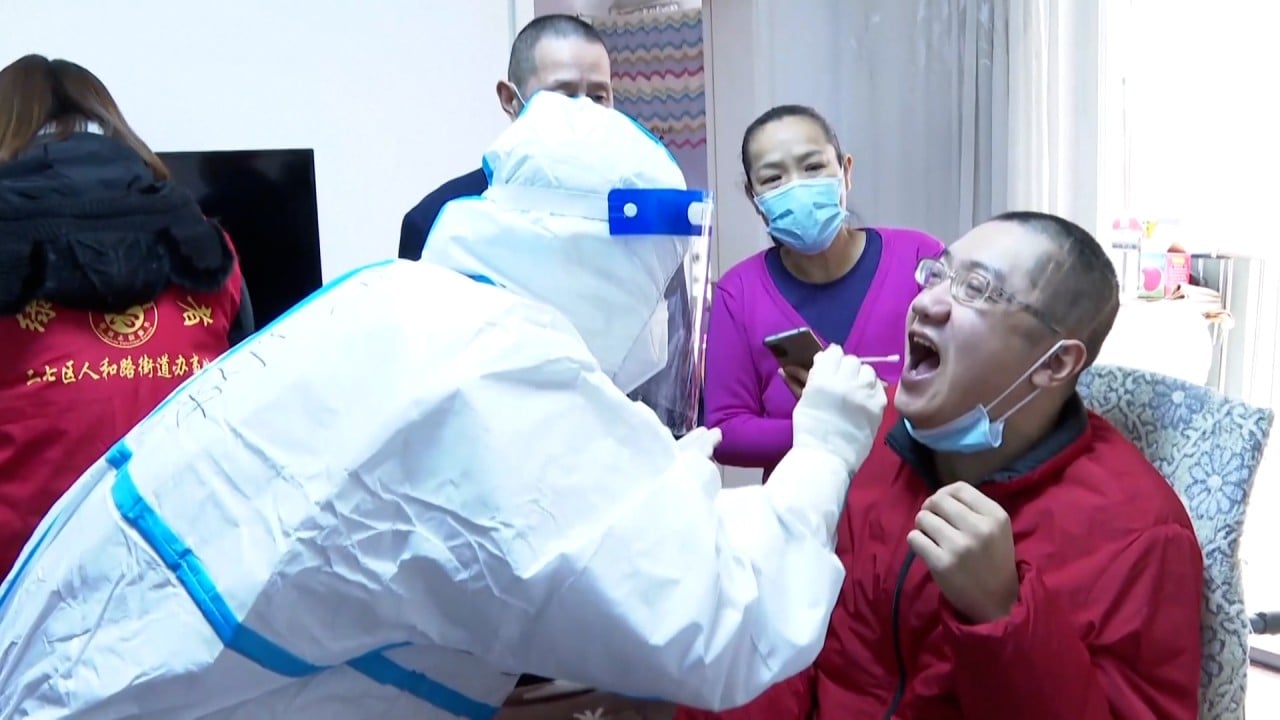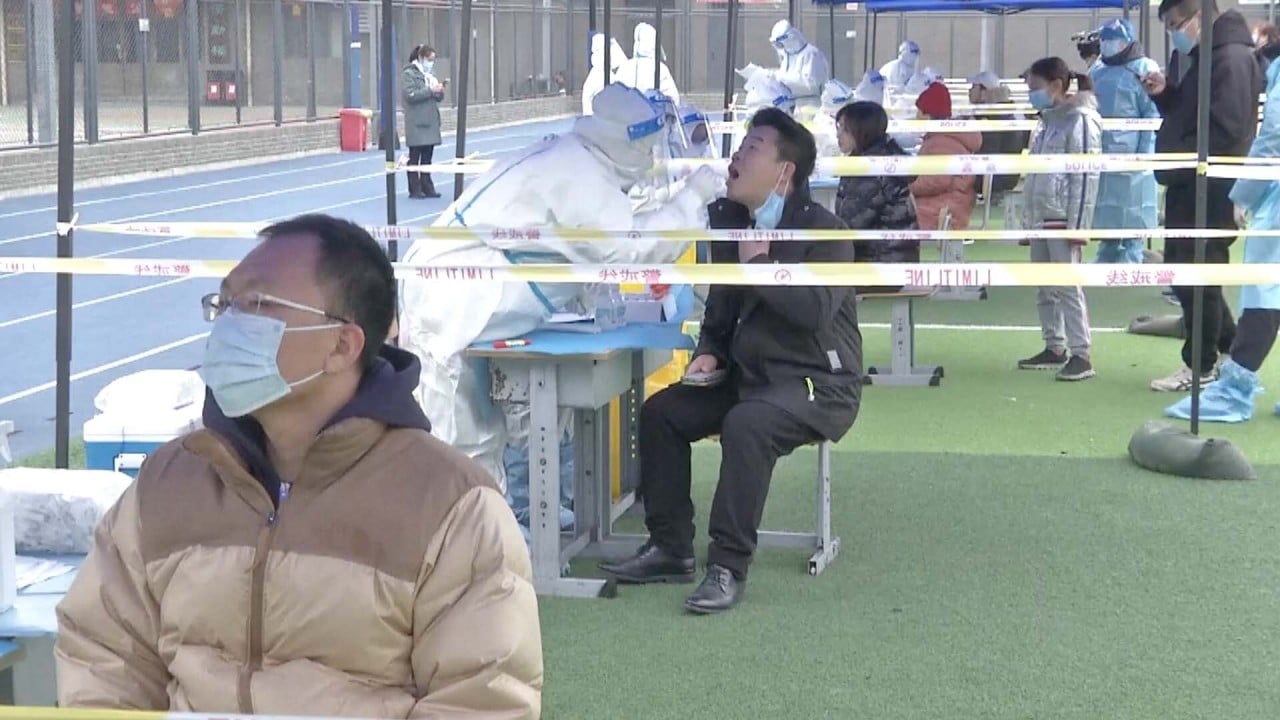
Mass testing, health codes, lockdowns: how China’s zero-Covid policy works
- Early detection, frequent contact-tracing, long quarantines and strict border control are key to China’s ‘dynamic’ zero-tolerance Covid-19 policy
- While approaches from small and big cities may differ due to testing capacity and resources, swift reactions mean ‘a tsunami-like outbreak is highly unlikely’
“The dead of winter is here. It is no easy task to test the 14 million people in this megacity in the shortest time possible,” the Tianjin government wrote in a public letter to residents on Monday.
“We are doing this to control the outbreak as quickly as possible, protect the health and safety of our people, and prevent the virus from spreading elsewhere, especially to the capital Beijing.”
Having a health code, which indicates a person’s Covid-19 status via an app that requires real-name registration, is essential in mainland China and must be shown to enter venues or travel.
China has focused on early detection and reporting of infections, and pinpointing the source of infection through testing under its “dynamic” zero-tolerance Covid-19 policy, which also features frequent contact-tracing, long quarantine periods and strict border controls.
According to a national directive on mass testing issued in September last year, local health authorities are required to define their scope of testing based on how an outbreak spreads and its risks.
Omicron halts Tianjin-Beijing train travel amid Spring Festival rush
Cities with more than 5 million people are required to finish a round of testing within three days and could seek national support if needed, while smaller cities have two days to do the job.
In the early stages of an outbreak where the source is unknown, authorities should launch at least three rounds of mass testing. The frequency and coverage of the tests should be adjusted based on the results of previous testing and contact-tracing, according to the notice.
“In principle, quarantine sites and streets or communities which found cases in the past three rounds should undergo tests every day, while people in areas without cases in [the past] 14 days could be tested every five days,” the notice reads.
The northwestern city of Xian, which has been under lockdown since December 23, has launched repeated rounds of mass testing that health authorities said aimed to detect cases and asymptomatic infections as early as possible.
“The coronavirus incubation period means that some people might not shed enough virus to be detected at the sample collection time,” Xian disease control and prevention centre deputy director Wei Xiaoli said last month. “A case might also be missed if the swabbing was not done properly.”
For a city of 13 million people, a few rounds of testing could hardly identify all patients, she added.
Xian has in the past weeks been battling a spiralling outbreak that started with cases reported at a quarantine hotel in early December.
The city, which marked its 19th day under lockdown on Monday, launched its seventh round of mass testing last week. Given a population of about 12.95 million, that would translate to more than 90 million Covid-19 tests.
However, not all Chinese cities have launched repeated all-out mass testing upon detecting Covid-19 cases – Shanghai and Beijing, for instance.
Zhu Huachen, an associate professor with the School of Public Health at the University of Hong Kong, said first-tier cities had more disease management experience and were better-equipped, with more medical staff.
“Shanghai, for example, did not need mass testing because their contact-tracing was done with great clarity,” Zhu said, adding that the municipality had about 3,000 full-time epidemiological investigators, 10 times more than Xian.
However, if contact-tracing failed to identify the transmission chain, mandatory testing would then need to be expanded to fill the gap in information, according to Zhu.
She said local authorities could set up guidelines to trigger mass testing, depending on the trend of the outbreak and the city’s financial situation.
“The goal for cities should be to have prevention measures of varying levels to deal with outbreaks of different scales,” she said. One risk signal could be detection of cases in two different areas of a city.
“Cities without this awareness tend to have a more chaotic handling of outbreaks,” she said. “The situation in Xian got out of hand because it didn’t have targeted measures in place for the latest outbreak.”
‘How could things get so bad?’: 3rd lockdown week looms for Xian
Jin Dong-Yan, a virologist also at HKU, said Chinese cities often need multiple rounds of mass testing to be accompanied by calls for people not to leave their homes or areas, because the event itself runs the risk of causing large crowds and spreading infection.
For example, in July last year, 35 people in the eastern city of Yangzhou were infected after visiting a Covid-19 testing station.
The highly transmissible Omicron variant also makes mass testing more challenging, Jin said, as “vaccine recipients may have a low viral load and test negative two to three days after testing positive.”
Chinese health officials often say “leave no household and no one behind” when it comes to mass testing, a mammoth task that requires not only laboratory testing capacities, but also huge manpower, and strict implementation and management.
China sends 70,000 Communist Party workers to help Covid-19-hit city
Under the national directive, local authorities are required to test large populations by dividing them into small units – such as residential buildings, villages, schools and companies – so that no one is missed.
Xian officials launched a “knock-on-doors” operation last week to check if the 100,000 people living in urban villages – rural areas surrounded by a city – had taken part in testing and whether they had aced difficulties in seeking medical attention.
To cope with rising demand for tests in the event of an outbreak, many Chinese cities, including Beijing, Guangzhou and Nanjing, had set up temporary air-inflated tents to serve as laboratories in places like stadiums or sports venues. Some were even equipped with automated testing machines.

While samples from high-risk populations are processed individually in labs, those from other areas are often pool tested – with five to 10 samples in one tube – to speed up the process.
Jin at HKU said pool testing might help cities with tight human and financial resources, but the reduced test sensitivity and the time needed to contact and retest the 10 people was likely to prolong outbreak-related restrictions.
But the intensive testing also caused serious disruption to daily lives, and took a heavy toll on the public health care system and government finance in the small city in Jiangsu province.
With each mixed test costing 20 yuan (US$3) at the time, the mass testing cost the Yangzhou government around 3.5 billion yuan in 20 days.
“The cost [of controlling Covid-19] would be high on the mainland because of its vast area and large population,” Jin said.
But this also has a plus side in terms of public health.
As Jin put it: “A tsunami-like outbreak is highly unlikely in mainland China.”











